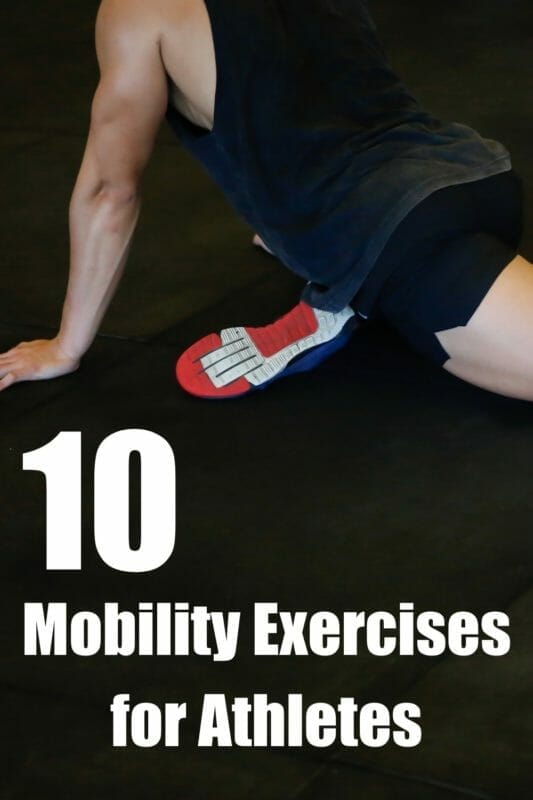Improving your mobility can have a profound impact on your performance. 10 exercises to improve your range of motion and prevent injury – For pro athletes to weekend warriors.
Mobility: that thing you say you’re going to do more of but never do. We all want to throw around enormous weights and push our bodies to their limits. But few of us want to move our joints into uncomfortable positions. If we want to do better at the former, we have to do the latter.
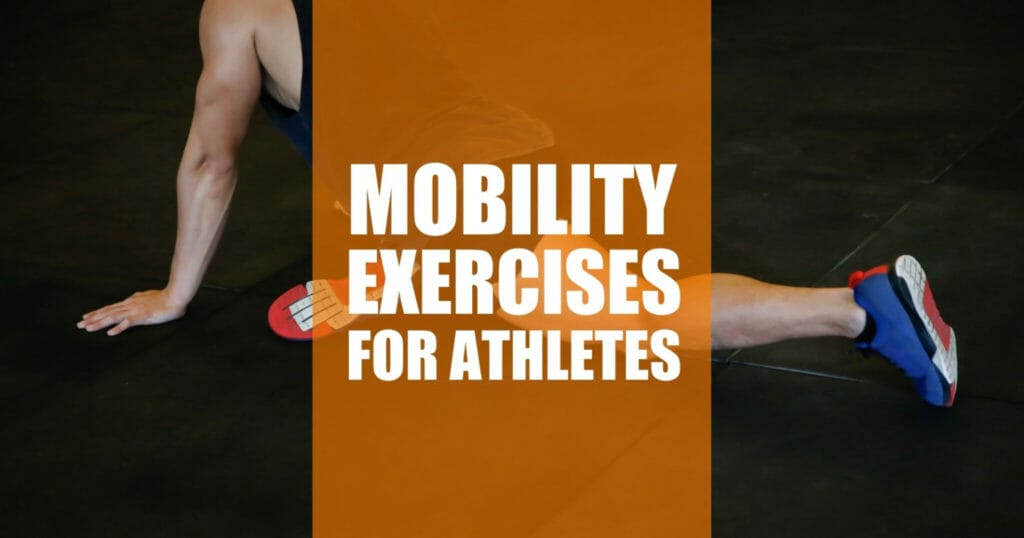
What Exactly Is Mobility?
Mobility and flexibility are often used interchangeably. The truth is that they are entirely different things. But mobility and flexibility go hand in hand.
First, let us clarify what flexibility is. Flexibility is the range of motion around a joint capsule. It is the ability of your muscles to lengthen or stretch.
Mobility is the usable range of motion around the joint. It's the ability of your muscles to move in a controlled manner within their range of motion.
Notice that the only difference between the definitions is the word “usable”? The difference is in the control of the movement.
For example, you need to be flexible to get into a deep squat. But you need mobility to perform a squat with good form.
Benefits of Mobility Exercises on Athletic Performance
Mobility is an important part of our training, even if we do not do it regularly. But did you know that it also has a significant impact on our day-to-day lives?
Let’s break down the benefits of mobility training into athletic and day-to-day performance.
- Improved Performance: Limited range of motion hold you back in a range of athletic positions. Tight hips reduce stride length and make running inefficient. Stiff ankles can put you in an unstable position in the squat. Mobility training helps put your body in a better position to hit bigger lifts and improve performance. All this without having to endure a brutal strength program. Mobility training can improve performance in sports that require quick changes in direction or speed.
- Reduced Risk of Injury: Training for mobility might be a pain, but getting injured is an even bigger pain. Literally. Reduced usable range of motion around the joint increases the risk of injury. We are prone to performing exercises incorrectly when we have limited mobility. Poor form increases the risk of injury.
- Increased Strength and Power Output: Mobility training improves strength and power output in all planes of movement. This means that you can move faster with less effort.
- Compliments Your Warm-Up Routine: Mobility is a great addition to your warm-up routine. You’ll be moving blood to the tissues around the joints and promoting the release of synovial fluid. Synovial fluid is the body's natural lubricant. This helps the joints move through their range with ease.
Benefits of Mobility Work on Day to Day Performance
You’ve probably been told sitting for too long is bad for you. In fact, some might even say sitting is the new smoking. In a world where desk jobs are the norm, this is far from ideal. That’s where mobility comes in. Mobility training can improve our day to day performance in several ways:
- Improves Posture: Technological advances have also induced the famous “slump”. Too much screen time causes our shoulders to fold in, necks to strain, and core to disengage. Mobility training helps to strengthen our core and open those joints back up. So, back and neck pain is less of a concern.
- Increases Flexibility: Sitting for too long causes our hip flexors, back, glute muscles, hamstrings, and quads to shorten. Shortened muscle fibres lead to reduced flexibility. Flexibility exercises aren't just for athletic performance, it’s also needed for everyday life. Think reaching down to tie our shoelaces, or scratching our backs. Mobility training prepares us for the motions we need to make daily.
No matter how much time we spend at our desks, we do not have to live with its negative effects. As long as it's broken up with mobility training, sitting isn't such a problem.
Most of these mobility exercises are static stretches and can be done as part of a post-workout mobility routine or outside of your regular workout times. You won't need any mobility equipment although these tools can be beneficial. Before strength training, it's recommended to perform some dynamic mobility exercises to prevent injury and improve performance.
10 Mobility Drills for Athletes
Active Bear Sit
Benefits
The bear sit stretches the inside of the legs, also known as the hip adductors. When we sit, we often have our legs crossed. The active bear sit helps open up the groin area to combat excessive sitting. This exercise is also useful for cueing external rotation of the femur during deadlifts and squats. It helps to improve hip flexor mobility.
How to Perform
- Sit on the floor with your feet in front of you. Bend the knees and keep your knees and heels aligned.
- Turn your feet out.
- Hold your ankles and use your elbows to push your knees down.
- To deepen the static stretching position, lean your torso forward, hold for a few seconds, then release.
- Repeat this movement, aiming to deepen the stretch. Ensure your spine remains straight throughout.

Pigeon Pose
Benefits
The pigeon pose mobility exercise stretches the hip flexors and opens up the muscles surrounding the pelvis and the glutes, improving hip mobility. Lengthening our hip flexors helps prevent forward pelvic tilt from exercises such as running, cycling, and sitting. Maintaining proper pelvic alignment helps improve our posture and reduces the risk of injury.
How to Perform
- Start in a plank position.
- Bring your right knee to your right hand and brace it on the floor. Your right foot position should be near your left hand.
- Keep your core tight and lower your hips to the floor. I
- If flexibility allows, lower your torso by coming up onto your elbows or extending your arms to lower your rib cage.
- Repeat this movement on the opposite side (left foot, right hand)
90/90 Stretch
Benefits
The 90/90 stretch lengthens muscles around the hip, including the glutes, psoas, hip flexors, piriformis, hip adductors, and abductors. The 90/90 stretch focuses on hip flexion, internal rotation, and external rotation. We need hip mobility and hip rotation for daily tasks such as walking and bending, and athletic movements such as running and weightlifting.
How to Perform
- Begin sitting on the floor with your left leg bent at a 90-degree angle in front of your body. Your left shin and knee should be on the floor.
- Place your right leg behind you, also at a 90-degree angle with your shin on the floor. Your right knee should be in line with your hip.
- Keeping your shoulders and core engaged, tilt your torso towards your left knee. Simultaneously drive your pelvis down to the floor.
- Repeat this movement on the opposite side.
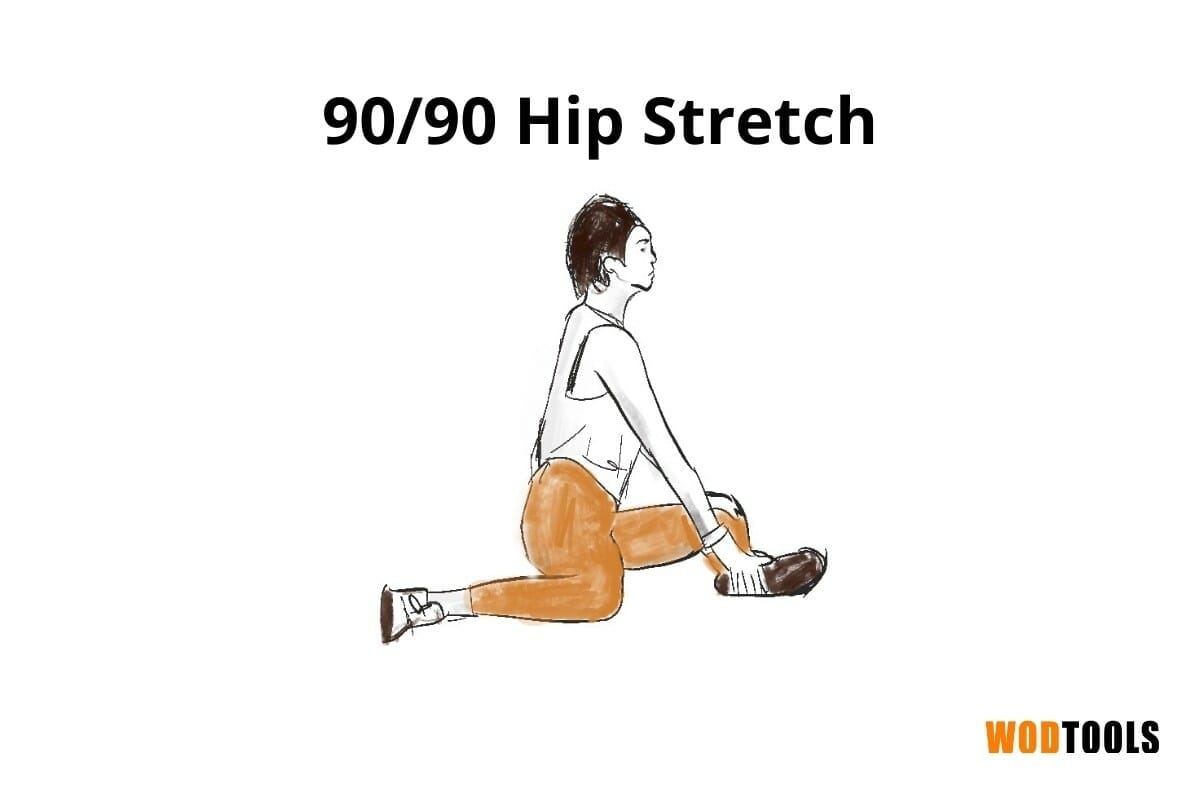
Toes to Wall
Benefits
The perfect squat requires good ankle mobility, something many of us lack. Poor mobility in the ankle can cause our chest to fall forward. If we apply this to squatting with weights, we'll either fail the lift or put an unnecessary strain on our back. Neither is something we’re striving for. By pushing your toes against the wall, you will be able to increase ankle flexion and, therefore, ankle mobility.
How to Perform
- Face an upright surface, such as a wall or the side of the rig.
- Place your toes on the surface to create a stretch in the back of your ankles.
- Move your hips forward to push your ankles into the flexed position.
- If you can, pull your upper body further forward or have someone push your upper back to further flex the position.
- Hold this position before switching sides.
Wall Extensions
Benefits
Wall extensions focus on improving shoulder mobility. Sports and daily life put a lot of stress on our shoulders. Working at a desk can cause our shoulders to slump. Poor shoulder mobility leads to inefficient movements and therefore poor performance. Wall extensions open up the shoulder joint and prepare the surrounding muscles for lifting.
How to Perform
- Stand or sit against a wall with your hips and back pressed into the wall. Ensure there are no gaps between your back and the wall.
- Place your arms against the wall in a 90-degree position.
- Keeping your arms, back, and hips against the wall, slide your arms up to extension.
- Perform 8-10 slow controlled reps.
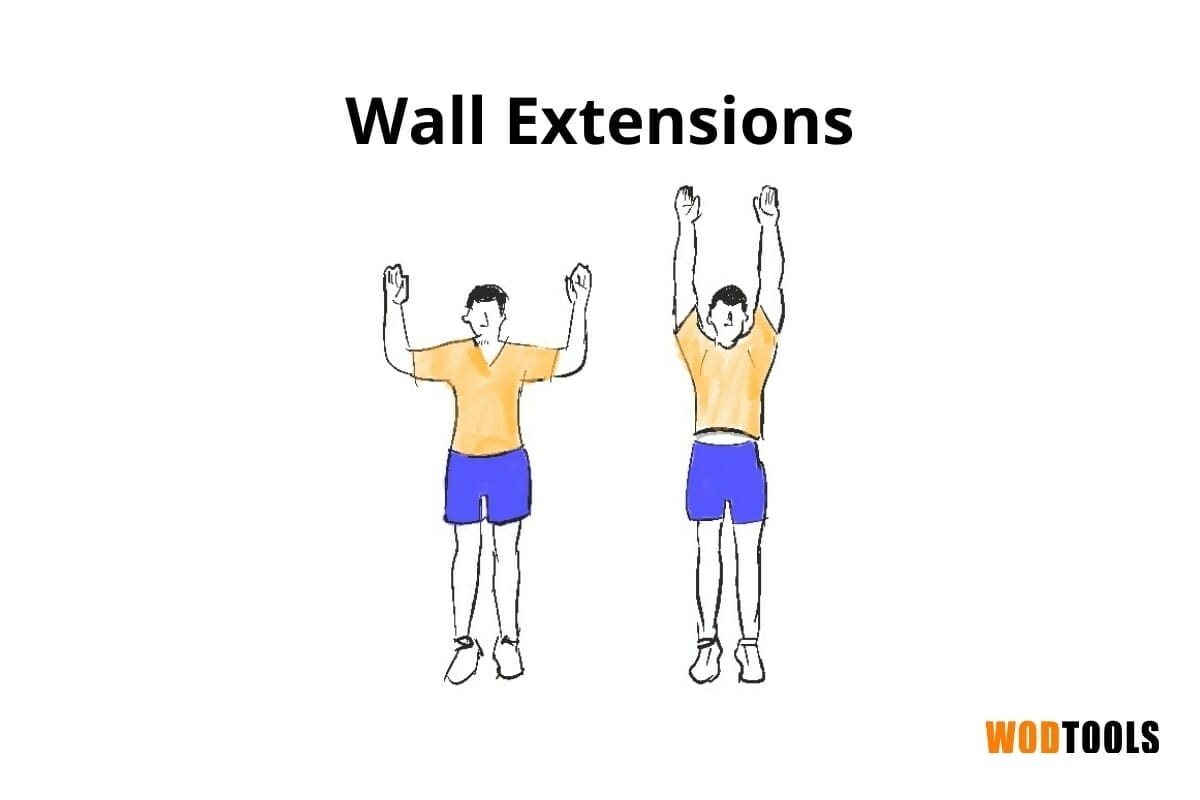
Sots Press
Benefits
The Sots press builds strength and mobility in the hips, back, and shoulders. It also helps build stability during thoracic extension. The Sots press requires maximal stabilization and tension. Thus, it helps increase strength and mobility in the receiving position of the Olympic lifts.
How to Perform
- Start with the barbell in a front rack position.
- Send your hips back and bend your knees to reach the bottom of a squat.
- Tense your core and upper back to straighten your torso.
- Keeping your feet on the floor and torso vertical, push the barbell overhead.
- Control the barbell back to the front rack position.
- Perform 8-10 slow controlled reps.

Scorpion
Benefits
The scorpion loosens up tight spots in the hips and lower back and improves spinal rotation. Limited spinal rotation increases the risk of injury during exercise and everyday life. Think of rotation during sled pulls or opening car doors.
How to Perform
- Begin lying on the floor with your arms extended to the side.
- Pull your shoulder blades down and back.
- Lift your right leg and move it across your body until your foot sits near your left knee. Keep your shoulders and arms on the floor.
- Slowly return the leg to the starting position.
- Perform 8-10 slow controlled reps.

Child’s Pose Arm Lifts
Benefits
Child's pose is a staple exercise in many yoga sessions. This pose stretches the muscles around the back and hips. The additional lifting of the arms targets the muscles in the mid and upper back to improve thoracic extension. Activating these areas leads to improved overhead mobility for movements such as the Overhead Press, Wall Balls, and Snatch, to name a few.
How to Perform
- Begin kneeling on the floor with your toes together and knees hip-width apart.
- Lower your torso to the floor while extending your arms on the floor.
- Keeping your shoulders square, lift your left arm off the floor.
- During the lift, externally rotate the shoulder.
- Ensure your torso does not rotate. Hold for three seconds then slowly bring the arm back to the floor.
- Perform 8-10 slow controlled reps per side.
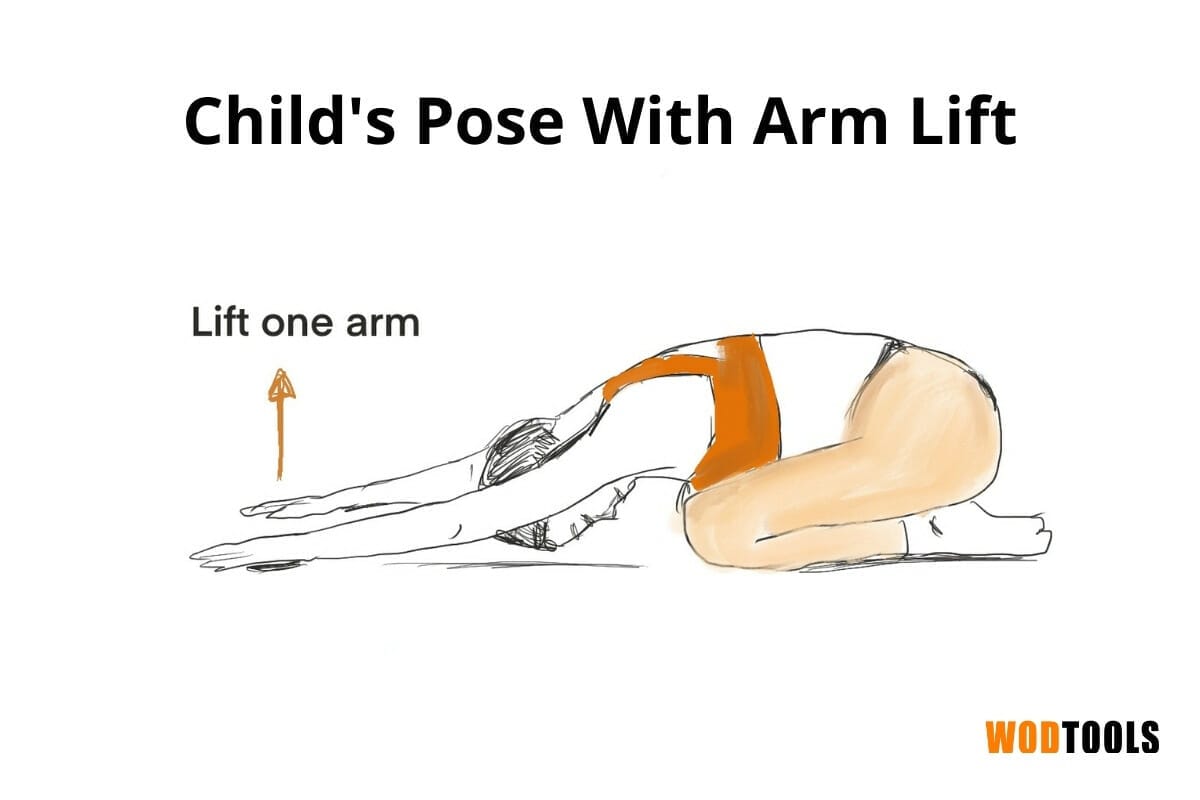
Wrist Walks
Benefits
Many of us reach for wraps or straps when we feel a little pain in our wrists. The truth is that many of us have immobile and/or weak wrists. Limited strength and mobility in the wrists limit our ability to get into the front rack position. This affects Olympic lifts, kettlebell swings, and push-ups. Wrist Walks force the wrists to extend beyond their typical range of motion, making them stronger and more mobile.
How to Perform
- Place your palms on the wall with your fingers pointing up.
- Keeping your arms extended, walk your hands down the wall.
- Once your palms come off the wall, reverse the movement. Rotate your hands so your fingers are pointing down.
- Walk your hands up as far as possible.
- Repeat for 1-2 minutes.
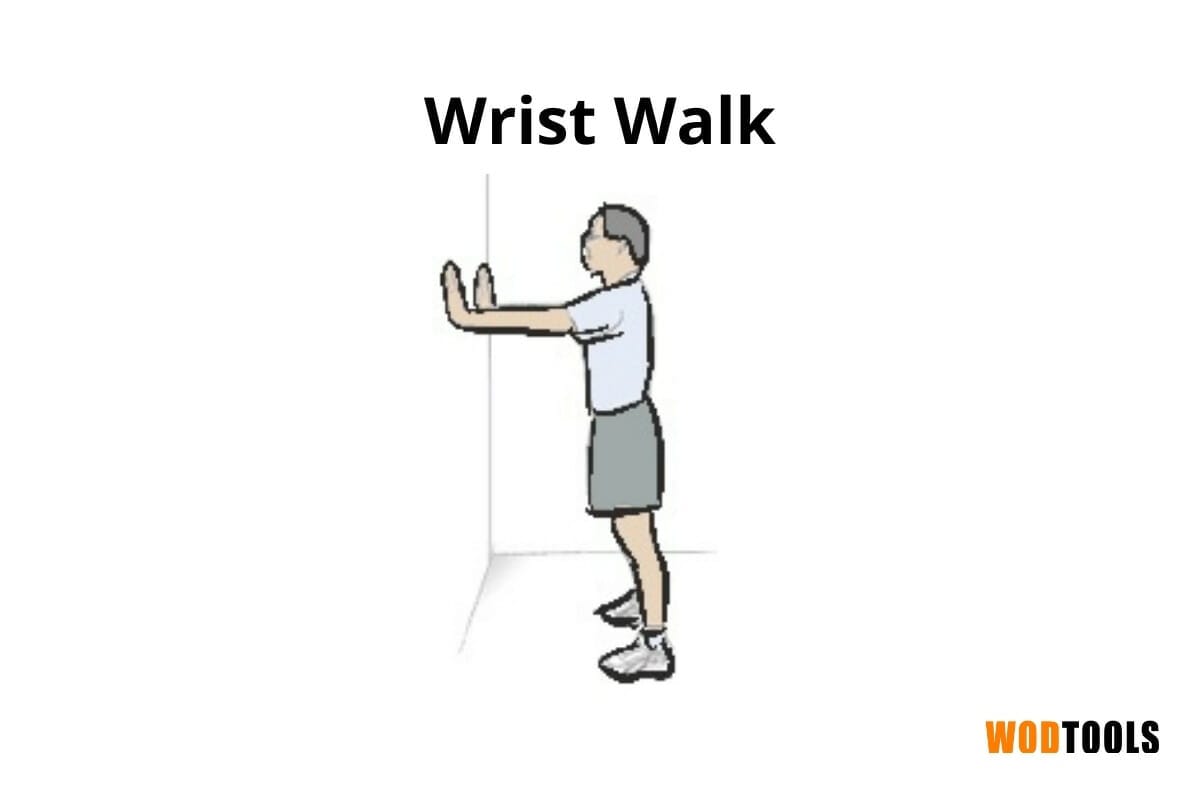
Controlled Articular Rotations (CARs)
Benefits
Controlled Articular Rotations encapsulate a range of exercises designed to move your joints through their entire range of motion, typically in a circular motion. CARs improve joint mobility by stimulating synovial fluid release and disposal of calcium deposits that can lead to inflammation and pain.
How to Perform
As mentioned earlier, CARs are used through multiple joints. We will focus on targeting the neck.
- Lengthen the spine and then bring the chin to your chest.
- Turn your head to the side and then rotate your neck in a 360 degree motion.
- Perform 8-10 slow, controlled repetitions per side.
Frequently Asked Questions
Why is mobility important for athletes?
That answer is simple: without proper mobility training, you risk injury (both minor and major), and your athletic performance—from workouts to competitions—will suffer.
How Often Should You Do Mobility Exercises?
Mobility work should be performed at least two to three times a week. If you’re a regular gym-goer and work a desk job, we recommend doing some sort of mobility work every day.
When should you do mobility exercises?
Do mobility exercises whenever it's most convenient to you and when you are most likely to complete the mobility drills. Calisthenics and mobility drills as a warm up before exercise can also help with improving range of motion and reducing injury.
How Long Should Athletes Stretch?
10-15min is a good amount of time to prepare the body for exercise. Be sure to target this time to your specific workout or individual weak areas.
What Is a Mobility Warm Up?
The ultimate aim of a warmup is to prepare the body for exercise. Mobility warm-ups focus on moving the joints through a greater range of motion and activating the smaller muscle groups.
Does foam rolling help mobility?
Foam rolling has been shown to increase range of motion in the short term in healthy people. A study in the Journal of Bodywork and Movement Therapies found that foam roll exercises significantly improves the mobility of the thoracolumbar fascia in a healthy young population. In general, dynamic and static mobility exercises are more beneficial in the long term.
Exploring Controlled Articular Rotations (CARs) – POST COMPETITIVE INSIGHT. (2016, February 14). POST COMPETITIVE INSIGHT. (Exploring Controlled Articular Rotations (CARs) – POST COMPETITIVE INSIGHT 2021)
